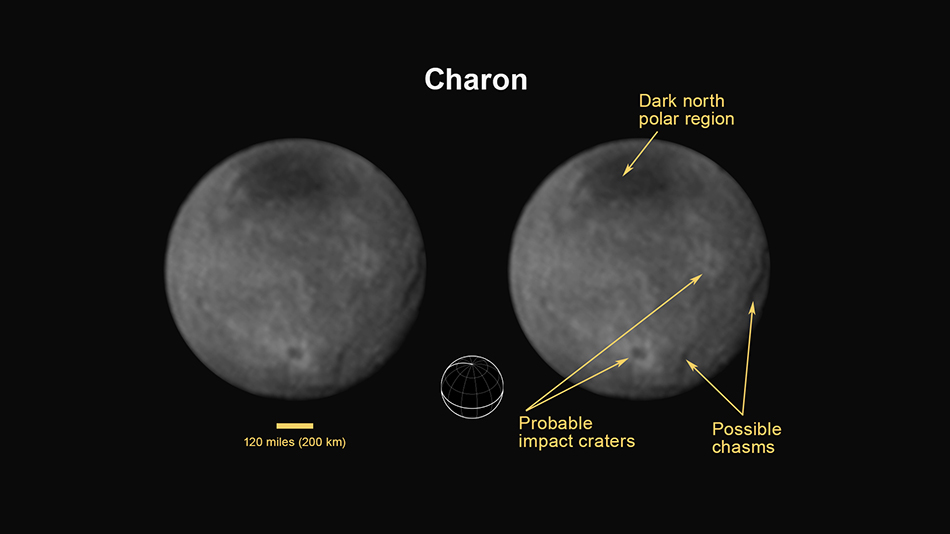Maryland – The largest moon of Pluto, Charon, was spotted by NASA’s New Horizons Spacecraft. It was discovered in 1978 at the United States Naval Observatory in Washington, D.C., using photographic plates. This new perspective of the natural sattelite represents a major legacy in the scientific world, and it will surely contribute for further investigations of the almost unknown planet.
Charon is the largest moon from the satellites that surround Pluto. It is 751 miles wide and was spotted by New Horizons Spacecraft on July 14. However, the focus of this new sighting is on its surface.
To this day, the New Horizons crew members have named different features on the surface of Charon, with famous sci-fi characters. For example, Princess Leia, Luke Skywalker and even Darth Vader from George Lucas’s recognized Star Wars film, have already features named after them.

Also, impact craters on the surface of this moon are named after the classic Star Trek characters, for instance, Captain James T. Kirk, Spock, Lieutenant Uhura, and Commander Sulu, already gained recognition in Pluto’s surroundings.
However, not only fictional characters names are being used. Many features on Pluto itself have been named based on real life explorers, vessels, researchers, etc. However, two features from the planet have received names of famous monsters, such as Cthulhu (a villain in many H.P. Lovecraft stories), and Balrog from the Lord of the Rings.
Nonetheless, the only institution in charge of assigning the official names to all discovered objects in space is the International Astronomical Union (IAU). Currently, the names given to features from Pluto and Charon, are being evaluated and submitted to the organization for approval. The names are suggested and voted by a considerably large public.
“We received so many great suggestions that winnowing down the list was a real challenge. Nevertheless, we limited our proposal to about 10 names in each theme so as not to overwork the IAU nomenclature working group too heavily,” SETI Institute reported.
Scientists are starting to narrow down the standards they will use to name the different features belonging to the other four smaller moons of Pluto. They have concluded until now that features on Styx will be named after gods of the rivers; Hydra will use names of mythical sea serpents; Kerberos will be labeled with names of dogs; and, finally, Nix will use names of gods and goddesses of the night.
Moreover, with this new approach of Charon, many past theories about Pluto must be restudied. Bill MacKinnon, leader of the New Horizons, Geology, Geophysics and Imaging team at Washington University in St. Louis said that at Pluto’s negative 390º Fahrenheit ice flows like glaciers.
“It’s just unbelievable. It’s truly a hallmark in human history”, said Nasa’s science mission directorate head John Grunsfeld. This allowed them to acknowledge the elemental composition of Pluto’s atmosphere by measuring the radio waves’ velocity.
All of these recent findings, have made scientists reassess the common understanding that Pluto was geologically dead and with little (or absolutely no) atmosphere.
New Horizons mission will keep sending new and unknown images of Pluto and its surrounding for the next 15 months.
Source: OUR PLUTO
